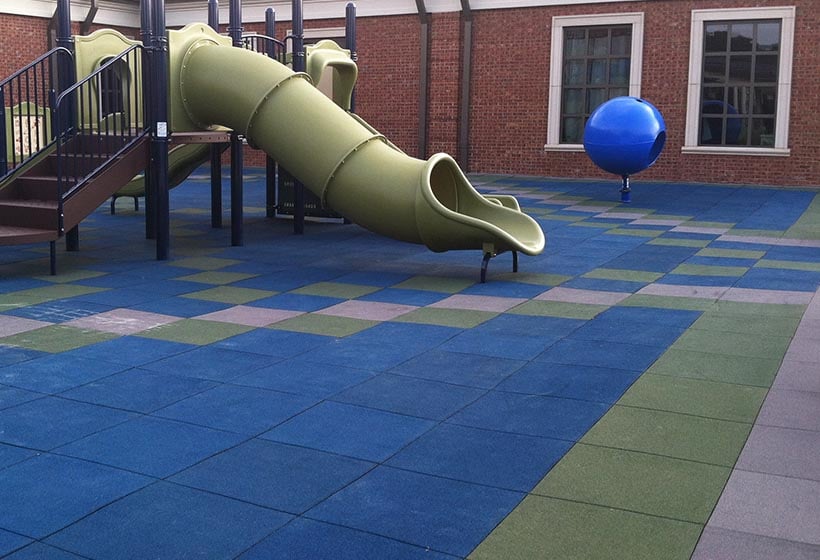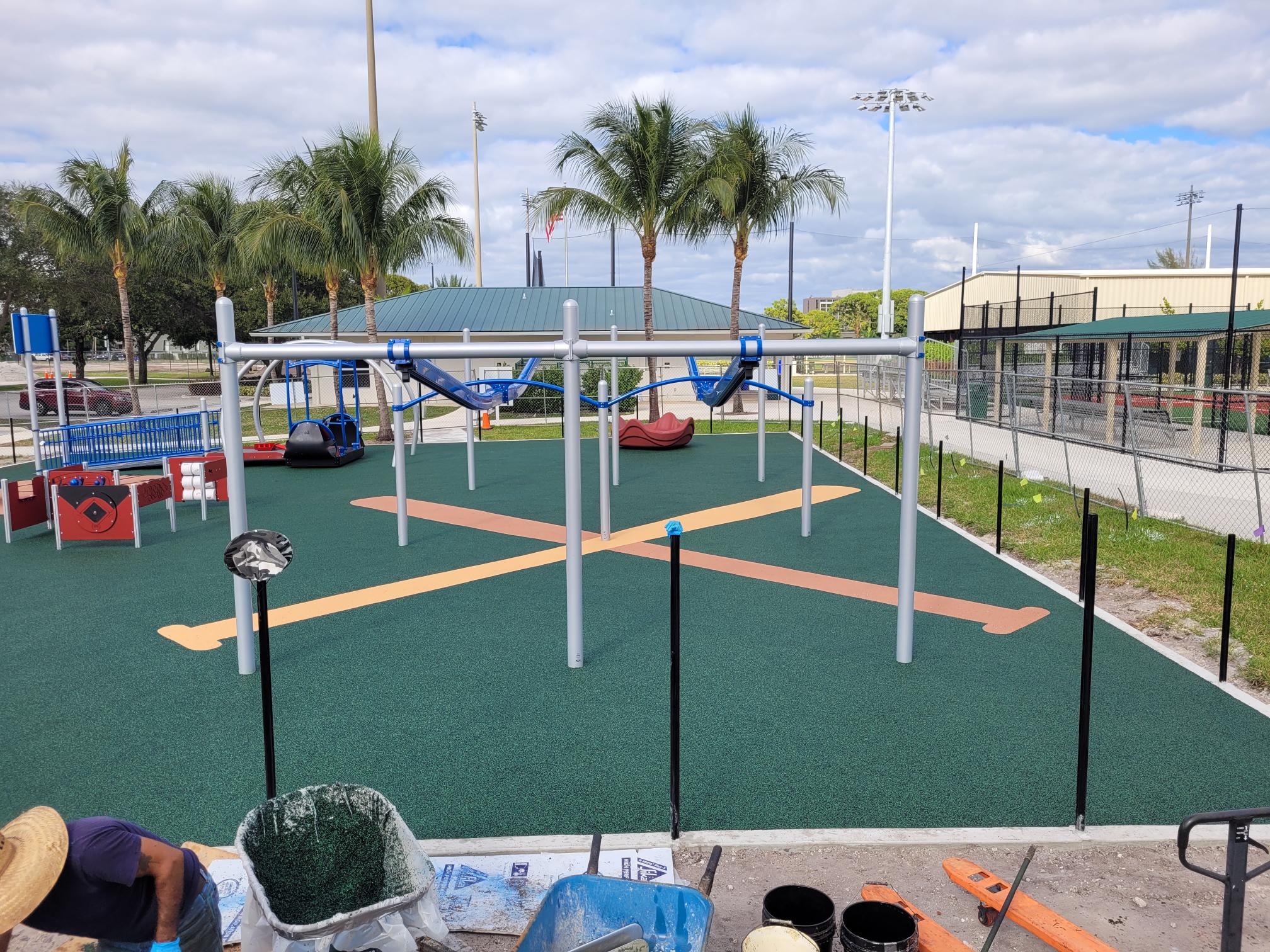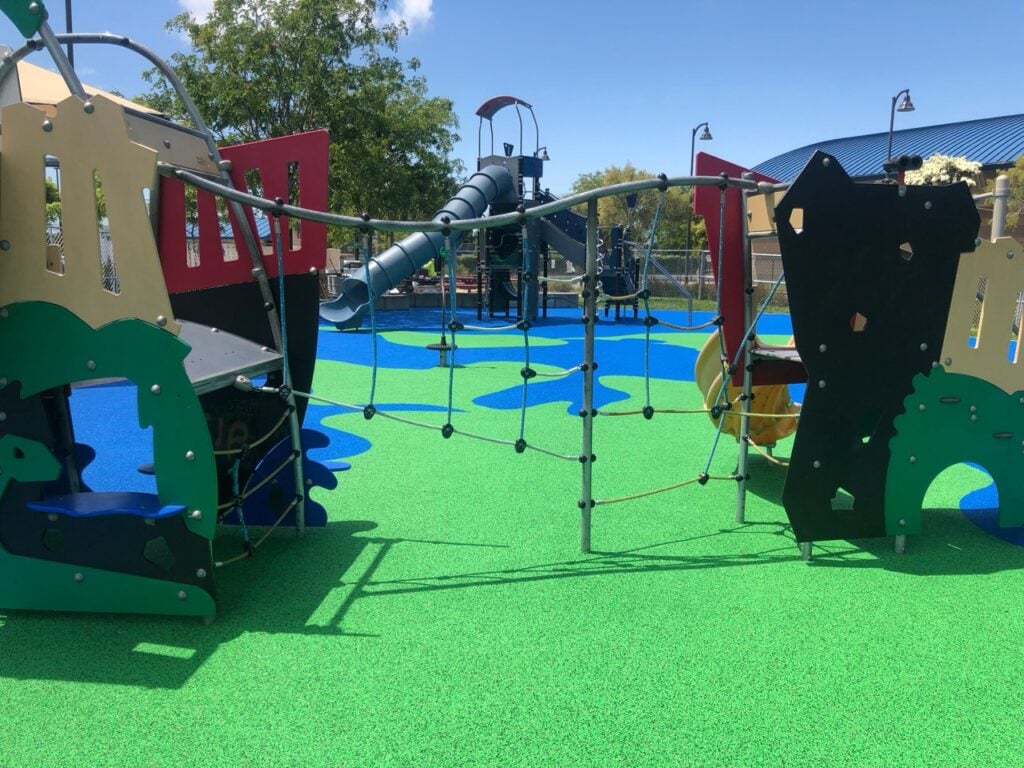Playgrounds are some of the most important spaces in any community. Whether they are located at a city park, on school property or as part of a church campus, these innovative areas are designed for young children to play and explore as they make new friends and develop a sense of independence.
Knowing what a critical role playgrounds play in any neighborhood, it's important to keep these special places as safe as possible for all kids. Choosing the right surfacing material is the first step toward designing a safe and engaging playground, and rubber tiles are one of the best surfacing material options.
Below are the top 5 reasons why you should choose rubber tiles for your playground surfacing.
1. Rubber Tiles are Easy to Install
Installing the surfacing material for your playground is an important — and exciting — step toward completing your recreational space. Rubber tiles are an ideal surfacing option because they are easier to install than most other surfacing materials, and the end result is a more precise, stable area for children to use.
The reason that rubber tiles are so easy to install is that they are created with a built-in alignment foot. Each rubber tile is configured with an innovative locking mechanism along its entire perimeter, which allows for a secure installation. This built-in alignment foot prevents curling and tile separation, which creates a safe, flat surface area for children to run and play on.
In order to make sure that the installation of rubber tiles goes as smoothly as possible, be sure to clean the entire work space and remove any debris that could impact the installation process. When the worksite is prepared for installation, you will find that the rubber tiles are installed quickly and easily. The interlocking design is easy for anyone to understand, which helps to expedite the process and can even help reduce the labor costs associated with your playground project.
2. Rubber Tiles are a Customizable Surfacing Material Option
While other surfacing materials are available in natural and neutral colors, rubber tiles are completely customizable. This allows you to design a playground that is inviting and exciting for young children — it makes your playground look completely unique from anything else in town.
You may want to customize the colors of your rubber tiles by:
- Creating a pattern that can be used in common playground games, such as a hopscotch pattern. Patterns also provide children with something interesting to look at, and it could spur their imaginations as they play with their friends on the playground.
- Installing rubber tiles that match your school colors. This is an awesome way to generate school spirit at your preschool or elementary school, and can help students develop a sense of identity with their community.
- Using bright, primary colors that make your playground feel like a whimsical space. Children are more likely to want to play on something that looks like it was made just for them, and colored rubber tiles will definitely appeal to their senses.
3. Rubber Tiles Meet Critical Fall Heights
Playgrounds are always designed with safety in mind, but the reality of the matter is, children are going to trip and fall as they are running around on your playground. This is why it's absolutely imperative that your playground surfacing materials meets all critical fall height requirements.
By recognizing critical fall height, you can design a playground that includes a surfacing material that will help absorb the shock of the fall. Rubber tiles, for example, are an ideal surfacing material because they have a lot of give. This playground surfacing material meets all critical fall height requirements for up to 10 feet.
In addition to meeting those critical fall requirements, rubber tiles have the advantage over other surfacing materials because the amount of surfacing will not dwindle over time. Thanks to the interlocking system that keeps these rubber tiles in place, they will always be there — regardless of the weather conditions. Mulch and other loose-fill surfacing materials need to be refilled year after year, and the varying levels can make them a less desirable option when it comes to safety and performance.
4. Rubber Tiles are Low-Maintenance
There are a variety of playground surfacing materials to choose from, which can make it difficult to make a final selection. But one thing that playground designers often overlook as they make their final selections is the amount of maintenance and upkeep that will be required in the months and years ahead.
Loose-fill materials, for example, are known as an affordable surfacing option that looks great and absorbs falls. However, these same materials do not offer the same consistency and reliability, and they often have to be replaced or refreshed regularly in order to maintain the proper levels for critical fall height requirements.
By comparison, rubber tiles offer a low-maintenance solution. Rubber tiles will last for many years, and they will not need to be replaced, and you will not have to worry that the depth of your surfacing material is varying from one day to the next. You will always have confidence knowing that your playground is safe for people to use at any moment.
While rubber tiles will not have to be replaced or refilled on a regular basis, like loose-fill materials, it is still important to care for these tiles in order to maximize their lifespan. You can make your rubber tiles last longer by:
- Removing debris on a regular basis. Branches, leaves, litter and other bits of debris can compromise the integrity of your tiles if left unattended for long periods of time. One of the best things that you can do is have your maintenance crew run a leaf blower over the rubber tiles at least once per week.
- Perform a deep cleaning every few months. You can use specialized cleaning agents in order to clean your rubber tiles and keep them looking as bright and beautiful as the day they were installed.
It's worth noting that playgrounds that are located in area with extreme temperature shifts may need more maintenance and care, as the seasonal changes may impact the overall appearance and functionality of the tiles.
5. Rubber Tiles are an ADA Accessible Surfacing Material
It is so important to design a playground that is accessible for children of all interests, ages and abilities to use. By creating an inclusive playground, you are going to give children more opportunities to connect with one another and understand each other's differences. It's an effort that will certainly be noticed by members of your community, who will appreciate knowing that the new local playground is designed with everyone in mind — no matter what their needs and abilities are.
Choosing an ADA accessible surfacing material is one huge step you can take toward designing a completely inclusive playground. Compared to loose-fill materials, which do not provide a consistent surface, rubber tiles offer a smooth surface that is much easier for wheelchairs and walkers to maneuver. This allows children and their caregivers to safely and easily enjoy the playground. Most rubber tiles that you can purchase for your playground will be compliant with all ADA standards.
Where to Buy Rubber Tiles for Playgrounds
At Rubber Designs, our interlocking rubber tiles are designed for both playground and recreational use. The rubber tiles are available in varying thicknesses to meet critical fall heights up to 10 feet. Contact us today to start a quote.



